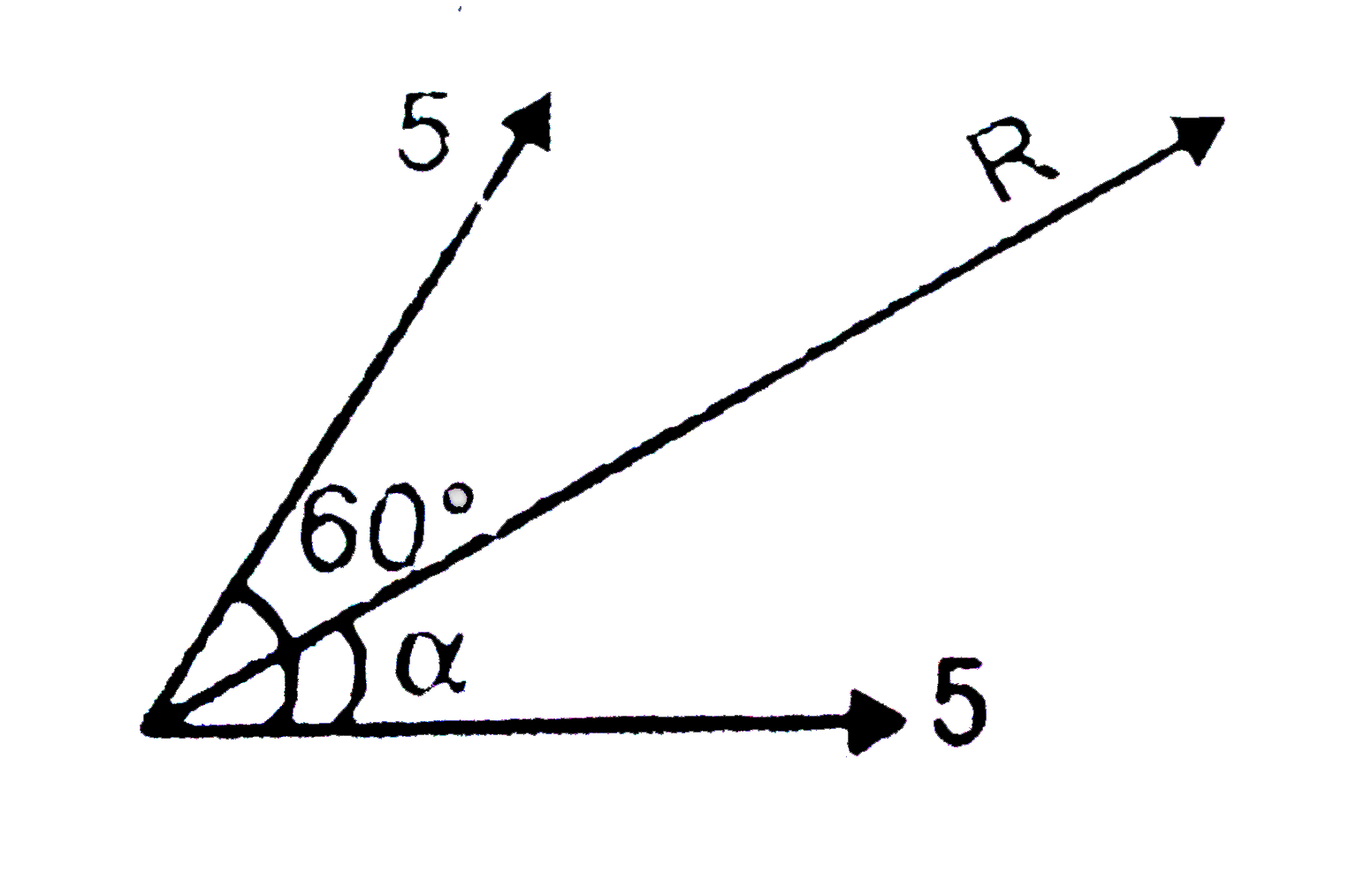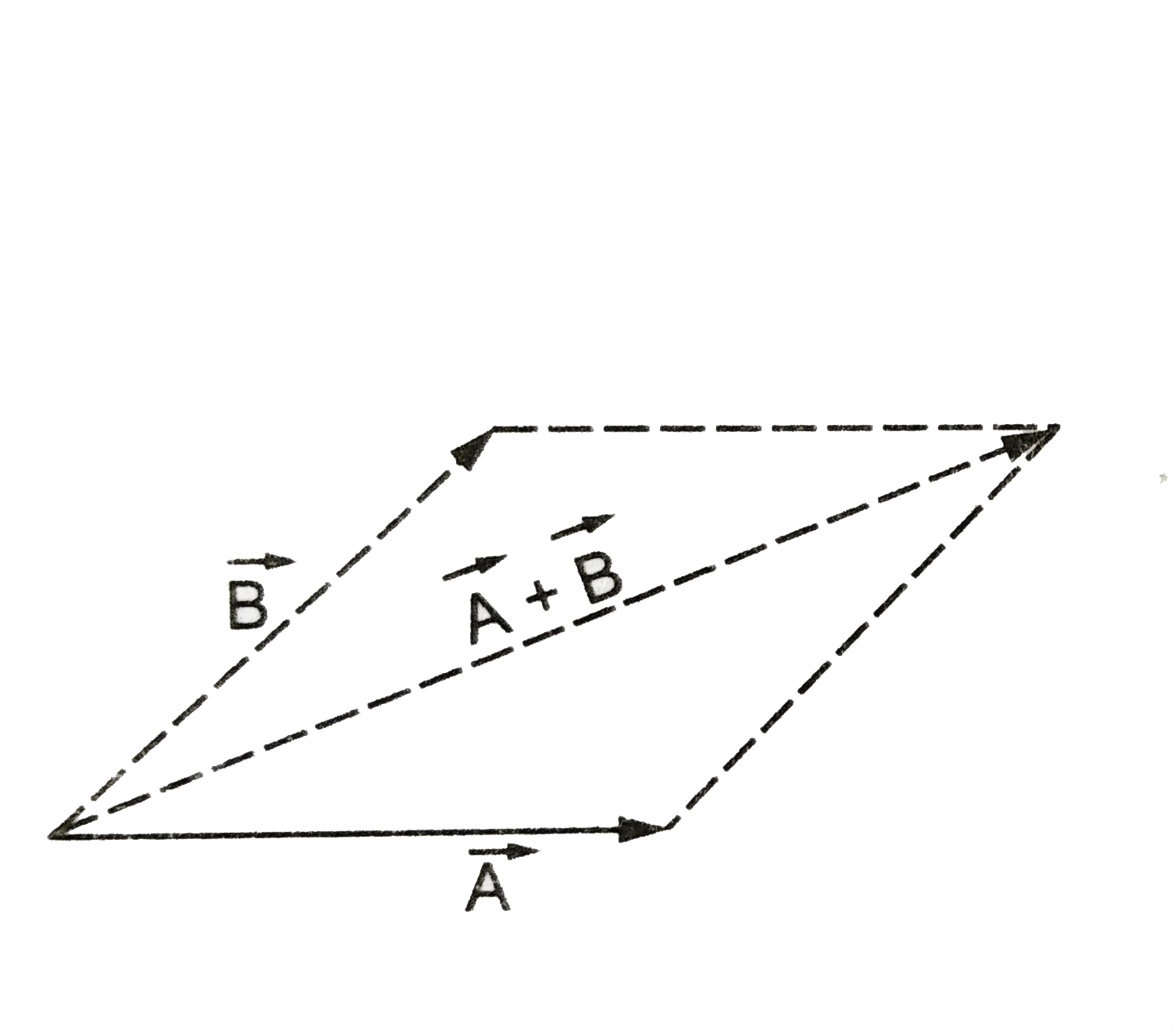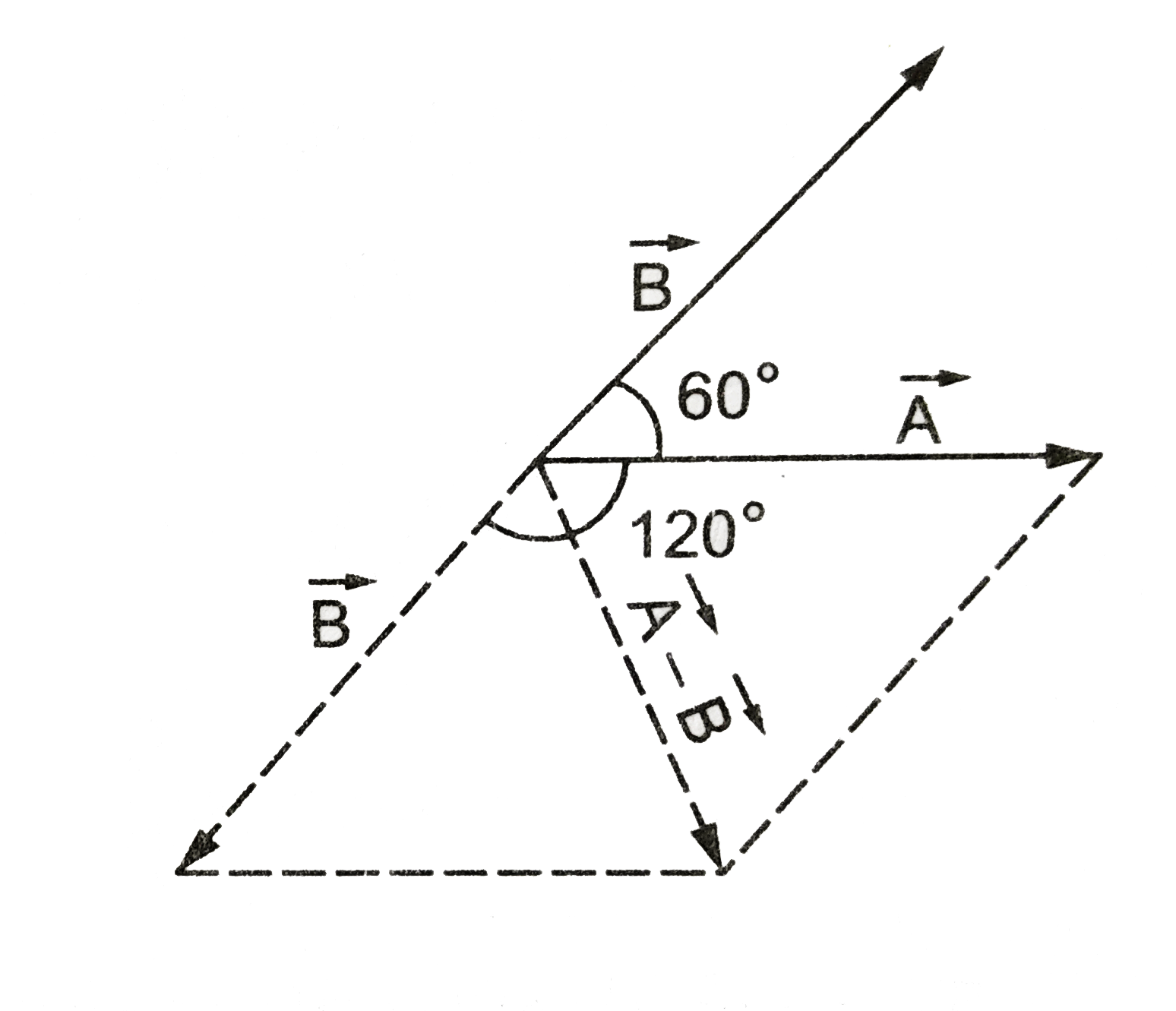Is it possible that the magnitude of resultantof two vectors is equal toeach of the vectors ?
To determine if the magnitude of the resultant of two vectors →A and →B can be equal to the magnitude of each of the vectors, we can analyze the situation mathematically.
1. Understanding the Problem:
We need to check if it is possible for the magnitude of the resultant vector →R=→A+→B to be equal to the magnitudes of →A and →B. This can be expressed as:
|→R|=|→A|and|→R|=|→B|
2. Expressing the Resultant:
The magnitude of the resultant vector can be expressed using the formula:
|→R|=|→A+→B|=√|→A|2+|→B|2+2|→A||→B|cos(θ)
where θ is the angle between vectors →A and →B.
3. Setting Up the Equations:
We can set up the equations based on our requirement:
√|→A|2+|→B|2+2|→A||→B|cos(θ)=|→A|
and
√|→A|2+|→B|2+2|→A||→B|cos(θ)=|→B|
4. Squaring Both Sides:
Squaring both sides of the first equation:
|→A|2+|→B|2+2|→A||→B|cos(θ)=|→A|2
This simplifies to:
|→B|2+2|→A||→B|cos(θ)=0
5. Rearranging the Equation:
Rearranging gives:
2|→A||→B|cos(θ)=−|→B|2
6. Analyzing the Condition:
For the equation to hold, we can divide both sides by |→B| (assuming |→B|≠0):
2|→A|cos(θ)=−|→B|
This indicates that cos(θ) must be negative, meaning θ must be an obtuse angle (greater than 90 degrees).
7. Conclusion:
Therefore, it is indeed possible for the magnitude of the resultant of two vectors to be equal to the magnitude of each of the vectors, provided that the vectors are oriented such that the angle between them is obtuse.
We need to check if it is possible for the magnitude of the resultant vector →R=→A+→B to be equal to the magnitudes of →A and →B. This can be expressed as:
|→R|=|→A|and|→R|=|→B|
The magnitude of the resultant vector can be expressed using the formula:
|→R|=|→A+→B|=√|→A|2+|→B|2+2|→A||→B|cos(θ)
where θ is the angle between vectors →A and →B.
We can set up the equations based on our requirement:
√|→A|2+|→B|2+2|→A||→B|cos(θ)=|→A|
and
√|→A|2+|→B|2+2|→A||→B|cos(θ)=|→B|
Squaring both sides of the first equation:
|→A|2+|→B|2+2|→A||→B|cos(θ)=|→A|2
This simplifies to:
|→B|2+2|→A||→B|cos(θ)=0
Rearranging gives:
2|→A||→B|cos(θ)=−|→B|2
For the equation to hold, we can divide both sides by |→B| (assuming |→B|≠0):
2|→A|cos(θ)=−|→B|
This indicates that cos(θ) must be negative, meaning θ must be an obtuse angle (greater than 90 degrees).
Therefore, it is indeed possible for the magnitude of the resultant of two vectors to be equal to the magnitude of each of the vectors, provided that the vectors are oriented such that the angle between them is obtuse.
Topper's Solved these Questions
- BOOK - ICSECHAPTER - VECTORS SCALARS ELEMENTARY CALCULUS EXERCISE - VERY SHORT ANSWER QUESTIONS10videos
VECTORS SCALARS ELEMENTARY CALCULUS
- BOOK - ICSECHAPTER - VECTORS SCALARS ELEMENTARY CALCULUS EXERCISE - SELECTED PROBLEMS (FROM VECTOR ADDITION )14videos
VECTORS SCALARS ELEMENTARY CALCULUS
- BOOK - ICSECHAPTER - VECTORS SCALARS ELEMENTARY CALCULUS EXERCISE - LONG ANSWER QUESTIONS5videos
VECTORS SCALARS ELEMENTARY CALCULUS
- BOOK - ICSECHAPTER - UNITSEXERCISE - MODULE 3 (SELECTED PROBLEMS)38videos
UNITS
- BOOK - ICSECHAPTER - WAVESEXERCISE - From Musical Sound10videos
WAVES
Similar Questions
Is it possible that the scalar product of two vectors is negative ?
View SolutionResultant of two vector of equal magnitude A is
View SolutionIf the magnitude of sum of two vectors is equal to the magnitude of difference of the two vector, the angle between these Vector is
View SolutionIf the magnitude of sum of two vectors is equal to the magnitude of difference of the two vector, the angle between these Vector is
View SolutionTwo vectors having equal magnitude of 5 units, have an angle of 60∘ between them. Find the magnitude of their resultant vector and its angle from one of the vectors.
 View Solution
View SolutionTwo vectors of equal magnitude are acting through a point. The magnitude of resultant is equal to the magnitude of either vectoe. Find the angle between the vectors.
View SolutionTwo vectors of equal magnitude of 5 unit have an angle 600 between them. Find the magnitude of (a) the sum of the vectors and (b) the difference of the vectors.
 .
.  .View Solution
.View SolutionAsserion: Magnitude of the resultant of two vectors may be less than the magnitude of either vector.
Reason: The resultant of two vectors is obtained by means of law of parallelogram of Vectors.View SolutionIs it possible to add any two vectors ?
View SolutionTwo vectors have magnitudes 6 and 8 units, respectively. Find the magnitude of the resultant vector if the angle between vectors is (a) 60∘ (b) 90∘ and ( c ) 120∘.
View Solution

